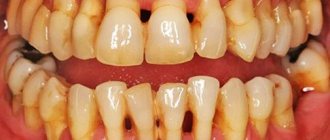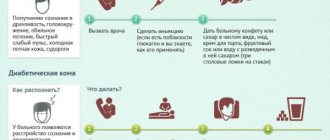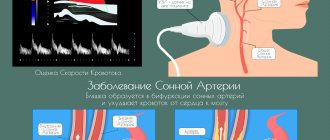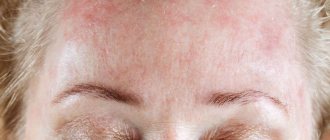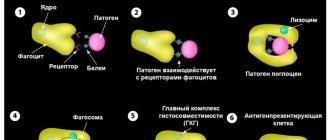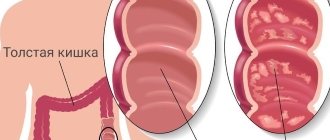The short-term craving for sleep during the day is well known to most of us. As a rule, this is a consequence of overwork, caused by increased physical and mental stress or chronic lack of sleep. Yawning and drowsiness often occur in a stuffy room with a lack of oxygen. Once you go out into the fresh air, your vigor returns. Thus, by observing the nature and duration of the period of drowsiness, we can conclude how serious the pathology is.
What to do if you constantly feel sleepy
If you constantly want to sleep, but at the same time you feel tired, your performance and concentration decrease, you should make an appointment with a doctor. Based on the results of the examination (if such a need arises), the therapist will prescribe a course of treatment or give a referral to a specialist. Most often, drowsiness is a companion to any chronic disease, so the patient will have to undergo examination so that the cause of the syndrome is correctly identified.
If a headache appears after sleep or the pain syndrome is present in a muted form during rest, while weakness and fatigue progresses, a visit to the doctor cannot be postponed. The symptoms described above are characteristic of diseases of the central nervous system, circulatory organs, heart and blood vessels, and many other pathologies.
Let us consider in more detail the features of the manifestation of drowsiness in various diseases.
Most common reasons
There are several reasons why you want to sleep in the fall :
- lack of sunlight – it affects the production of hormones;
- the body is preparing for winter - for some people, seasonal weight fluctuations are well expressed, for others they are almost not felt;
- uncomfortable temperature - over the summer we have become accustomed to the heat, and when the temperature outside the window drops, and the heating has not yet been turned on in the apartment, it reacts to a change in the usual climate, reduces activity in order to conserve heat and energy;
- weakened immunity - due to decreased doses of ultraviolet radiation, the production of vitamin D decreases; in the second half of autumn, the proportion of fresh local vegetables and fruits in the diet decreases;
- freezing – the weather in autumn is unstable, and when leaving the house in the morning it is difficult to choose the right clothes so as not to freeze;
- fatigue – after the end of the holiday season, many companies launch new projects, introduce various innovations, and an increase in work volumes and new demands cause stress, the desire to sleep is a natural defensive reaction;
- exacerbation of chronic diseases - many chronic diseases worsen in autumn and spring, which leads to a deterioration in well-being.
Vegetovascular (neurocirculatory) dystonia
Vegetative-vascular dystonia is a dysfunction of the vascular system associated with a disorder of the endocrine system (more precisely, with a change in the mechanism of neuroregulation). The disease is so common that many people do not perceive it as a serious illness. The high-risk group includes young and middle-aged women. In addition to drowsiness and headache, signs of VSD are:
- cardiopalmus,
- rapid onset of fatigue from minor physical exertion;
- feeling of lack of air (a person often sighs);
- periodic dizziness;
- pain in the heart area;
- cold extremities (especially hands and feet);
- tendency to sweat.
A large role in the development of the disease is played by hereditary predisposition, bad habits (smoking in the first place), a sedentary lifestyle, inability to withstand stressful situations, and emotional instability. VSD can develop against the background of cerebrovascular accident.
In most cases, symptoms of VSD disappear with lifestyle changes. Proper nutrition, physical exercise, adherence to a work-rest regime, and regular hardening lead to a significant improvement in well-being: drowsiness and headaches disappear, mood improves and performance increases.
In advanced cases, medications are prescribed to improve the functioning of the autonomic nervous system. The problem cannot be solved on its own; medical assistance is required.
Are the methods for studying daytime sleepiness sufficiently reliable?
A recent study conducted in Russia aimed to determine the validity of each of the objective and subjective methods for assessing sleep sleepiness, and to confirm or refute the correlation between them. The result of such research work is of significant importance for the diagnosis, treatment and prevention of the development of OSA.
Occurring only in some patients with OSA, excessive daytime sleepiness is in some cases considered as a diagnostic criterion for the presence or absence of this syndrome. And also as a factor emphasizing the need or effectiveness of treatment with CPAP therapy (Constant Positive Airway Pressure Therapy).
In the study, experts decided to compare patients' responses to single questions regarding their daytime sleepiness, as well as to questions on the Epworth Scale (ESS), which is ubiquitous in the world. A one-time assessment of the correlation between the subjective description of daytime sleepiness, the presence of obstructive apnea syndrome and data from a special medical study - polysomnography - was carried out to confirm the results.
The study involved 200 patients, their structure can be represented as follows:
- 152 people (76%) are men;
- 48 people (24%) are women;
- average age – 45 years;
- with severe OSA – 103 (51.5%) patients;
- with moderate OSA – 42 (21%) patients;
- with mild OSA – 50 (25%) patients;
- without OSA – 5 (2.5%) patients.
Patients were asked to answer 2 single questions about sleep and the Epworth Questionnaire.
The sum of points was assessed on the Epworth scale (from 0 to 24 points), with:
- a score of ≥10 was considered a positive result (gradation 1),
- ≤6 – as negative (gradation 0),
- 7−9 – as borderline (gradation 0.5).
Patients were asked to answer two single questions: “Do you experience daytime sleepiness?” and “Have you experienced episodes of overwhelming sleepiness during the day when you fell asleep despite your best efforts to stay awake?” For each of the questions, the answer “yes” corresponded to a gradation of 1, the answer “no” - to a gradation of 0, the absence of an answer or the answers “I don’t know/rarely”, etc. - to a gradation of 0.5.
When comparing all 3 methods of subjective assessment of daytime sleepiness (Epworth scale, two questions about different types of sleepiness), they found a weak correlation with each other.
Among patients with Epworth scores greater than 10, thirteen percent had a negative answer to the question about daytime sleepiness. Among patients with an Epworth score greater than 6, 50 patients confirmed that they had daytime sleepiness over the past few months.
Thus, the researchers’ data on the weak correlation of various options for subjective assessment of daytime sleepiness confirm the fact that subjective assessment can only partially reflect a person’s tendency to fall asleep during the daytime. At the same time, excessive daytime sleepiness is accompanied by a decrease in active attention, reactivity, performance and daytime activity. This means that it requires close study on the part of the person and timely contact with a sleep specialist to exclude serious sleep pathologies (obstructive apnea syndrome).
A depersonalized website study found that 40% of respondents reported daytime sleepiness
CNS lesions
Any brain damage caused by infection, trauma, postoperative complications or systemic diseases can lead to the development of drowsiness. Associated symptoms:
- headache;
- fatigue;
- lethargy;
- violation of attention and active orientation;
- change in facial expressions.
Drowsiness develops as you fall into a coma. Patients in a state of partial unconsciousness complain of headache, nausea, dizziness, aggravated by bright light and loud sounds.
Drowsiness also occurs when poisoned by poisons that affect the central nervous system. As a result of exposure to endogenous or exogenous toxins, depression of the central nervous system occurs. The person complains of weakness, headache, lethargy, and blurred vision. In some cases, drowsiness is replaced by bouts of excitement, after which severe fatigue sets in. The listed symptoms are alarming and indicate the need for emergency medical care.
How to cope with fatigue and apathy on your own
You can combat seasonal drowsiness by taking foods containing B vitamins and ascorbic acid. In addition to citrus fruits, the diet includes general strengthening agents.
An infusion of dried calamus roots (10 grams of raw material per glass of boiling water) is drunk a quarter glass 30 minutes before meals. It will help cope with physical fatigue and improve condition after serious illnesses and operations. It is useful to take in old age.
For lethargy resulting from depression, hypotension, and functional disorders of the nervous system, a tincture of Aralia tall or cordate roots is recommended. It is prepared with alcohol in a ratio of 1:5 and taken 30–40 drops 2–3 times a day. The juice of barberry berries, fresh grapes, pomegranate fruits, cherries, and infusion of cinnamon rose hips have a general strengthening effect on the human body.
Severe fatigue goes away after drinking Schisandra chinensis tincture, 30–40 drops per day, or eleutherococcus. Vital tone is increased by the infusion of mistletoe herb. Take a teaspoon of raw material per glass of boiled water at room temperature. After 8 hours of infusion, drink a third of a glass up to 3 times a day.
Stimulation of energy and endurance is needed for those who have constant weakness and drowsiness. Magnesium in purslane, beans, spinach, lettuce, poppy seeds, and coriander can restore vital potential. Cortisol contained in licorice root helps fight stress. You should take 2-3 grams of root in the morning and evening, reducing the amount of herbal remedy after 6-8 weeks.
Changing your lifestyle will help you get rid of chronic fatigue
If you cannot get rid of increased fatigue and apathy with folk remedies, then you need to consult a doctor. Conditions that make it difficult to work, disrupt sleep, or disrupt relationships with others require consultation. It is dangerous when, after a period of good health, severe apathy suddenly sets in.
In this case, you need to undergo a comprehensive examination by visiting an endocrinologist, cardiologist, neurologist, or psychotherapist.
Increased self-esteem
You can get rid of fatigue and drowsiness using psychological methods:
- the ability to forgive oneself for mistakes;
- spending free time with people who inspire and support self-confidence;
- planning to introduce new things into your life;
- reading good books, discussing them with friends.
Only positive emotions and good feelings protect against fatigue and prolong life. We must constantly please ourselves with good deeds. Relieves tension in the evening by taking a warm bath or massage. It is important to be able to keep your back straight. Then apathy and weakness will have no place in life.
Frequent drowsiness and fatigue, apathy, and lack of vital energy are cured when the cause of the condition is identified. Signs caused by external causes can be easily eliminated by changing your daily routine and diet. Internal causes must be dealt with together with specialists.
Drowsiness in renal and hepatic coma
Renal and hepatic coma are life-threatening conditions. Uremic (renal) coma is a consequence of chronic or acute renal failure. When the ability of the kidneys to cleanse the body of protein metabolism products decreases, pronounced signs of poisoning appear, which include lethargy, drowsiness, and indifference to the surrounding reality. The patient's only desire is to go to sleep to relieve fatigue.
In cases of acute renal failure caused by burn disease and other injuries, threatening symptoms increase rapidly. In chronic, difficult-to-treat diseases, such as renal amyloidosis or glomerulonephritis, increased drowsiness develops gradually and is often a harbinger of renal coma. Worrying signs also include blurred vision and itchy skin.
Description
Hypersomnia is classified as a sleep disorder. It is characterized by an increase in its duration at night and increased sleepiness during the day. With this pathology, the duration of sleep increases significantly. Despite this, the patient constantly does not get enough sleep and does not feel cheerful after waking up. Its main signs are considered to be:
- the need for long night sleep of more than ten hours;
- paroxysmal or constant drowsiness during the day;
- after a nap there is no noticeable improvement in the condition;
- difficult and prolonged period of waking up;
- the presence of a feeling of “drunk intoxication” - when waking up, dizziness appears, the patient finds it difficult to get up, he feels unwell.
In case of hypersomnia, the need for long-term sleep is assessed using an individual approach. This is compared to the duration before the problems with excessive sleepiness occurred. The diagnosis of hypersomnia is made if such symptoms last for at least three months.
Brain contusion
With a brain injury, negative symptoms increase gradually, so the patient’s general well-being does not always correspond to the severity of the injuries received. Drowsiness and apathy may be the only signs indicating a pathological condition. As swelling increases, tissue compression increases, intracranial pressure increases, which causes symptoms such as headache, nausea, and vomiting. Urgent care should be called if the patient is sleeping after the injury without taking sedatives.
Hypothermia
The onset of drowsiness after a long stay in the cold is due to a pronounced disruption of metabolic processes in the cells of the cerebral cortex due to a decrease in body temperature and pathological changes in the nature of biochemical reactions. In case of short-term exposure to low temperatures, drowsiness goes away on its own, and in case of frostbite, comprehensive medical care is required. Surgeons, neurologists, neurologists, traumatologists, therapists and doctors of other specializations take part in rehabilitation.
Consequences of drug therapy
Some types of medications cause increased drowsiness, headaches, dry mouth and other unpleasant side effects. These drugs primarily include antipsychotics, tranquilizers, and antidepressants. The craving for sleep is also increased by some medications prescribed for hypertension, in particular, these include clonidine, amlodipine, and condiline.
Most previous generation antihistamines prescribed for the treatment of allergies have a hypnotic and sedative effect. These are diphenhydramine, pipolfen, suprastin, tavegil. Some drugs reduce concentration. When you stop taking the medication, all negative symptoms disappear.
General indications for sleep disturbances
If you feel sleepy during the day, you must adhere to simple rules and regulations, regardless of the reasons for the pathological condition:
- give up strong coffee and tea (especially in the evening);
- exclude heavy, high-calorie foods from the diet;
- include physical exercise and walks before bedtime in your daily routine;
- avoid stress;
- avoid hot baths and showers (give preference to warm and cool water);
- exclude alcohol and smoking.
Be sure to undergo a diagnostic examination. Drowsiness rarely occurs for no apparent reason, so you should not expect that the unpleasant condition will go away on its own.
Epworth Score (ESS)
The most popular among subjective methods for assessing sleepiness is the Epworth scale (Epworth, ESS). This is a series of questions that are widely used to study the effects of sleep on daytime behavior, of course in conjunction with other criteria. This questionnaire has a high level of sensitivity for determining sleep disorders: insomnia, apnea, narcolepsy.
The advantages of its use include:
- Ease of use,
- Assess sleepiness over a sufficiently long period of time.
Minuses:
- Dependence on the interpretation of the questions asked by both the researcher and the subject. This means that the scale cannot always be reproduced and assessed correctly.
- Not fully correlated with objective test results.
Questions from the Epworth Scale questionnaire
Treatment
If warning signs that are systemic in nature appear, including drowsiness and headaches, make an appointment with a specialist at the MedCom clinic in Ryazan. Experienced doctors will quickly and accurately diagnose and prescribe the correct treatment on an outpatient or inpatient basis. It has everything you need to undergo diagnostics and receive effective medical care, without queues or a bureaucratic approach. If you have any questions, please contact us by phone or through the online form.
OSLER test
In addition to the above methods, there are other ways to quantify drowsiness. One of them is the use of the Oxford Sleep Resistance Test (OSLER). OSLER is a type of behavioral test. It measures a person's ability to stay awake and assesses daytime alertness. Disadvantage: cannot be done independently, because the test uses multiple unprepared reaction time (MURT). That is, it measures a person's reaction time to a series of visual or auditory stimuli. The OSLER test demonstrates how quickly or slowly a patient responds to stimuli. The sleepier a person is, the more mistakes he makes. OSLER and MURT are practical and reliable tools for examining daytime sleepiness in suspected sleep apnea syndromes.
Current research intends to determine whether there is a link between daytime sleepiness and the occurrence of OSA.
